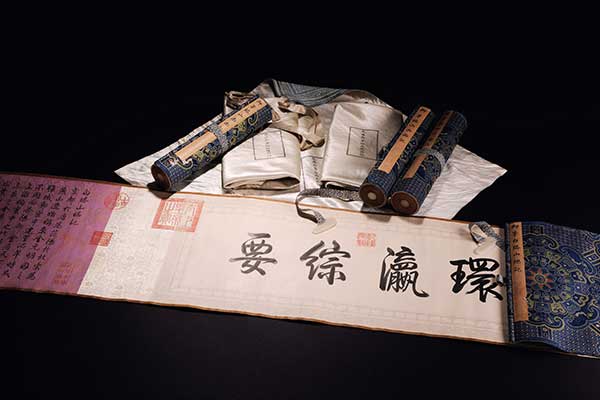
Essays on Baita Mountain, written by Qing Dynasty (16441911)emperor Qianlong, sold for 116 million yuan ($19 million) in 2014.(Photo provided to China Daily)
The sale also showed a steady market for Chinese calligraphy works, especially those from the Tang, Song and Yuan (1271-1368) dynasties.
Ren Wen from the Beijing-based Art Market Monitor of Artron says few works of these three periods exist and even fewer come on sale as most of them are in either public museums or the hands of top private collectors who are not very likely to sell.
So, when a piece like this appears in sales rooms, it inevitably sparks a bidding war, pushing up the price.
Market watchers also say that the sale of Jushi Tie could be considered a one-off and one should not expect the classical Chinese art market to erupt based on this one transaction.
Classical Chinese art is often referred to as a category with rather high entry barriers. In this genre, buyers need to be knowledgeable about Chinese history and its cultural traditions, which helps them cultivate a discerning taste.
They also need to invest a lot of time researching the subject so that they are less likely to be cheated.
Zhu Shaoliang, a collector of Chinese paintings, says that the classical artwork market is meant to be a niche one.
"The majority of its top pieces are already in art galleries and museums, while the modern Chinese painting market still has a quality supply of works."
He also says modern ink art attracts a bigger group of potential buyers because it deals with more everyday subjects and is thus easier for people to appreciate.
Typically, a robust art market also relies on potential buyers being educated about the subject to better recognize the value of China's artistic legacy, and not be focused on just one or two iconic works.
A good example of the obsession with iconic pieces was seen when the Palace Museum held the Precious Collection of the Stone Moat exhibition last year.
At that time, visitors endured hours of waiting just to see the Qingming Shanghe Tu, a 12th-century painting known as one of the top treasures collected by the museum.
But after the work was replaced with other equally important but lesser-known works at the exhibition, the number of visitors to the exhibition dropped noticeably.
Explaining the decline in the visitor numbers, Yu Hui, a researcher with the Palace Museum, says the Qingming Shanghe Tu attracts a lot of viewers because it is an iconic work, but the other works, largely literati paintings, require an understanding of Chinese art history.
To counter this phenomenon, he suggests that more study material on classical Chinese paintings and calligraphy be included in school texts so that the younger generation get a complete picture of how Chinese ink art has evolved.


















































